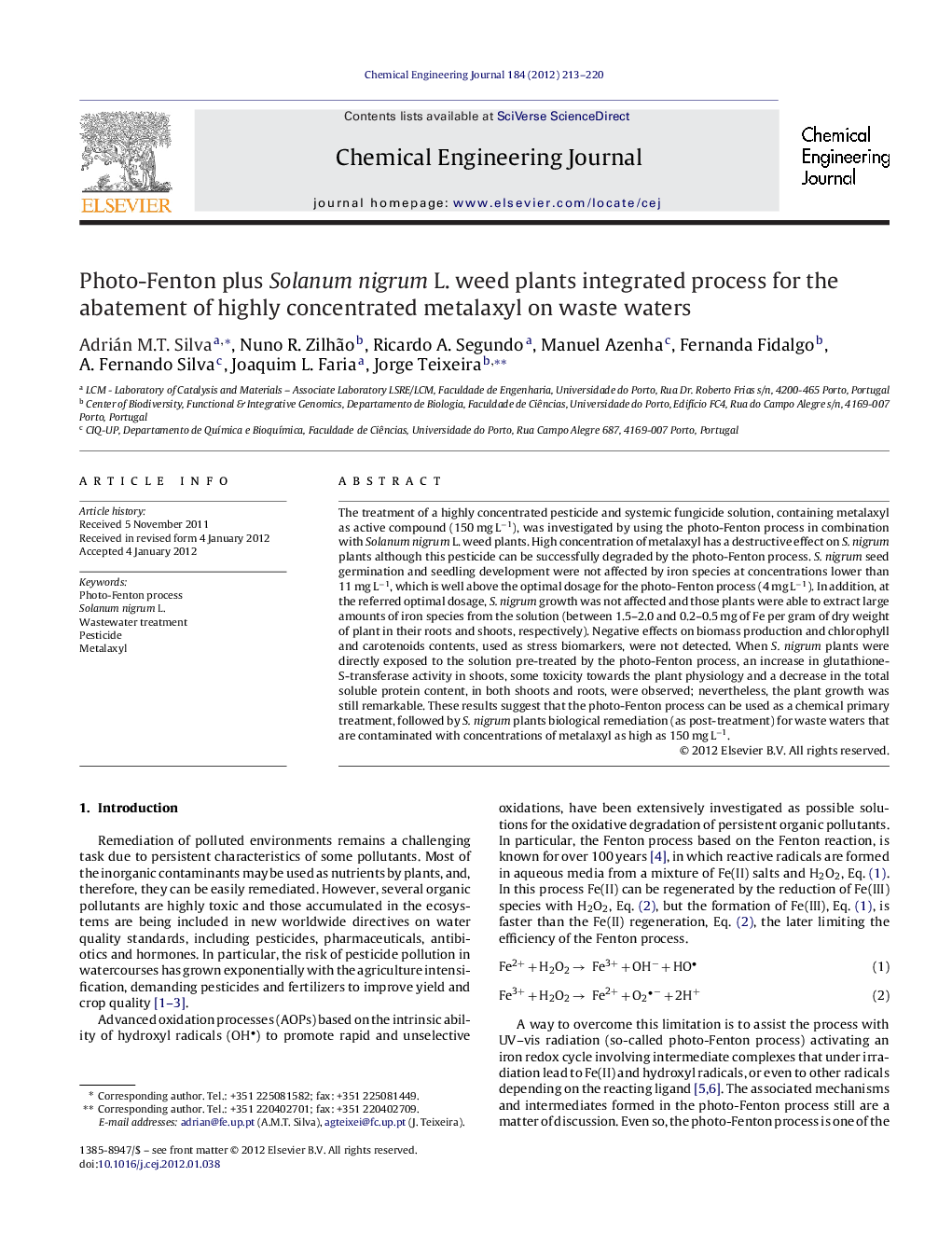| Article ID | Journal | Published Year | Pages | File Type |
|---|---|---|---|---|
| 150109 | Chemical Engineering Journal | 2012 | 8 Pages |
The treatment of a highly concentrated pesticide and systemic fungicide solution, containing metalaxyl as active compound (150 mg L−1), was investigated by using the photo-Fenton process in combination with Solanum nigrum L. weed plants. High concentration of metalaxyl has a destructive effect on S. nigrum plants although this pesticide can be successfully degraded by the photo-Fenton process. S. nigrum seed germination and seedling development were not affected by iron species at concentrations lower than 11 mg L−1, which is well above the optimal dosage for the photo-Fenton process (4 mg L−1). In addition, at the referred optimal dosage, S. nigrum growth was not affected and those plants were able to extract large amounts of iron species from the solution (between 1.5–2.0 and 0.2–0.5 mg of Fe per gram of dry weight of plant in their roots and shoots, respectively). Negative effects on biomass production and chlorophyll and carotenoids contents, used as stress biomarkers, were not detected. When S. nigrum plants were directly exposed to the solution pre-treated by the photo-Fenton process, an increase in glutathione-S-transferase activity in shoots, some toxicity towards the plant physiology and a decrease in the total soluble protein content, in both shoots and roots, were observed; nevertheless, the plant growth was still remarkable. These results suggest that the photo-Fenton process can be used as a chemical primary treatment, followed by S. nigrum plants biological remediation (as post-treatment) for waste waters that are contaminated with concentrations of metalaxyl as high as 150 mg L−1.
► High concentration of metalaxyl has a destructive effect on Solanum nigrum plants. ► Metalaxyl can be successfully degraded by the photo-Fenton process. ► S. nigrum is able to extract large amounts of iron species from liquid solutions. ► S. nigrum growth is remarkable when exposed to the pre-treated metalaxyl wastewater. ► The integration of both processes is a potential option for wastewater treatment.
